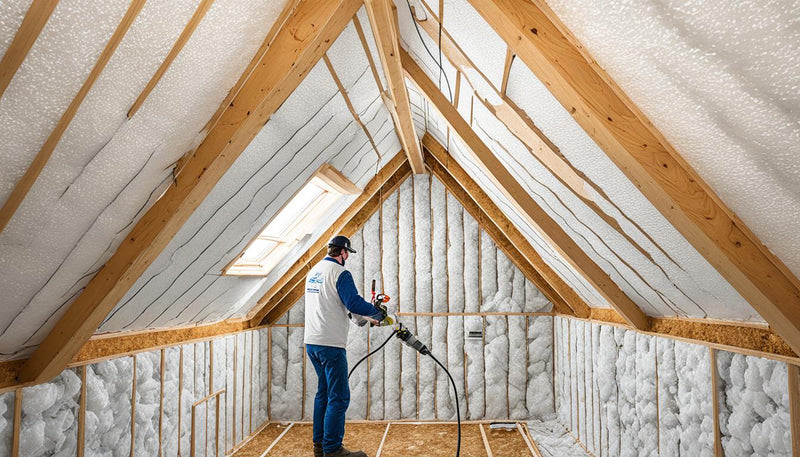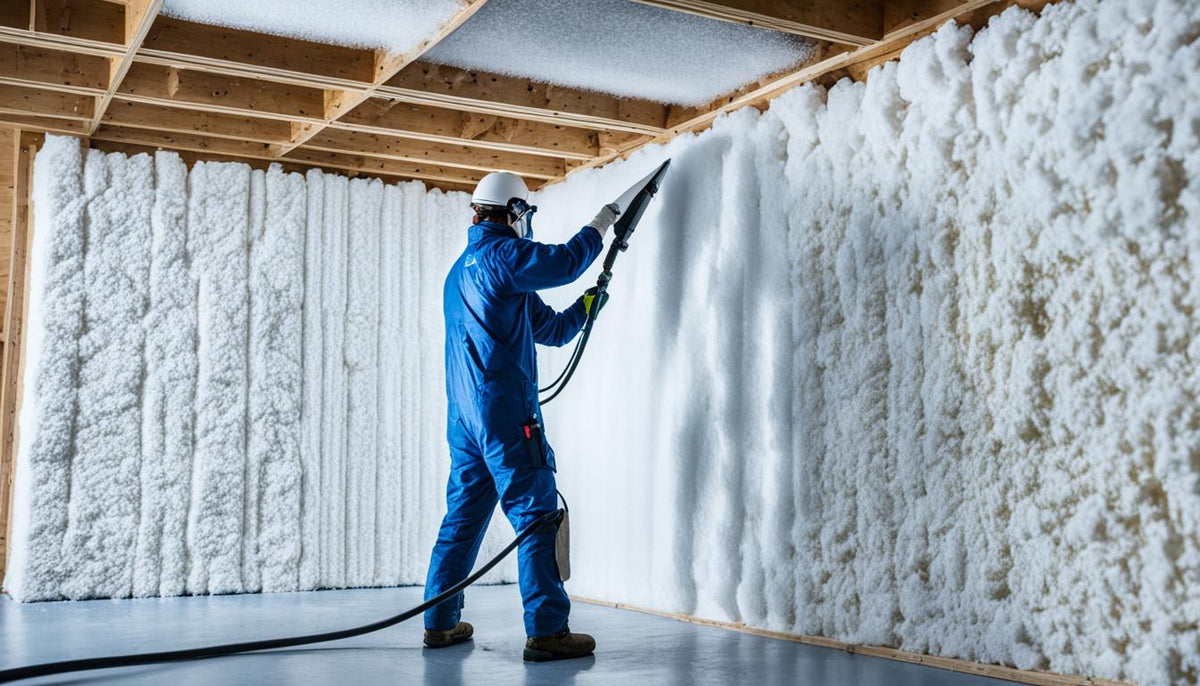Spray Foam: The Ultimate Solution for Air Sealing and Insulation
Spray foam insulation has actually arised as a leading option for efficient air sealing and thermal insulation, offering an unique combination of buildings that set it apart from standard techniques. Understanding the full range of its benefits, installment processes, and contrasts with various other insulation kinds is important for making educated choices.
What Is Spray Foam?
Spray foam is a functional insulation product that integrates the principles of air securing and thermal resistance to enhance power efficiency in structures. Composed largely of polyurethane or various other similar substances, spray foam is used as a liquid that increases upon call with surfaces, producing a solid, continuous layer of insulation. This one-of-a-kind residential or commercial property permits it to load gaps, fractures, and voids that standard insulation materials might forget, supplying a superior air seal.
There are 2 main kinds of spray foam: open-cell and closed-cell. Open-cell spray foam is lighter and more versatile, using excellent noise absorption and a lower R-value per inch - Spray Foam. On the other hand, closed-cell spray foam is denser, giving a higher R-value, wetness resistance, and included architectural stability to building components
The application process typically entails customized equipment, ensuring a smooth application that sticks to different substratums, including concrete, timber, and metal. This adaptability makes spray foam ideal for both new buildings and retrofitting existing structures. Its capacity to produce an impermeable barrier dramatically adds to decreasing power usage and enhancing interior air top quality, thus making it a favored option amongst contractors and home owners alike.
Advantages of Spray Foam Insulation
One of the most significant advantages of spray foam insulation is its remarkable capacity to create a continual air obstacle, which efficiently decreases power loss. Unlike typical insulation products, spray foam expands to fill splits and gaps, making certain that air leakage is dramatically reduced. This particular not only improves energy effectiveness however also causes lower utility costs with time.
Additionally, spray foam insulation gives superior thermal resistance, adding to a much more secure interior atmosphere. Its high R-value per inch permits efficient insulation in constrained rooms, making it suitable for attics, wall surfaces, and crawl rooms. The moisture-resistant residential properties of spray foam help protect against mold and mildew and mildew growth, promoting much healthier living conditions.
One more vital benefit of spray foam insulation is its sound-dampening top qualities (Spray Foam). It properly minimizes sound transmission in between rooms, developing a quieter and much more comfortable home setting. The toughness of spray foam likewise sticks out, as it does not sag or resolve gradually, maintaining its efficiency throughout its lifespan
How Spray Foam Functions
Recognizing how spray foam insulation functions is crucial for valuing its efficiency in air securing and thermal resistance. Spray foam insulation contains 2 main components: isocyanate and polyol material. When these elements are combined, they undergo a chemical response that creates the material to broaden swiftly, creating a dense foam that loads spaces, fractures, and cavities.
As the foam increases, it check this follows surface areas, creating an airtight seal that substantially lowers air infiltration. This characteristic makes spray foam insulation extremely reliable at preventing drafts and wetness infiltration, which can cause power loss and damage gradually. In addition, the closed-cell version of spray foam offers exceptional thermal resistance because of its stiff framework, properly reducing warm transfer.
The special residential or commercial properties of spray foam enable it to comply with uneven surfaces, making sure thorough insurance coverage and a smooth obstacle. Because of this, spray foam insulation not just boosts power performance yet additionally adds to boosted interior air high quality by minimizing the build-up of irritants and toxins. Inevitably, comprehending the mechanics behind spray foam highlights its duty as a remarkable option for insulation and air securing in both industrial and household applications.
Setup Process Summary

Before installation, the space must be appropriately cleaned and prepped, making sure that surface areas are complimentary from wetness, dust, and debris. This step is important because contaminants can endanger adhesion and general performance. When the area is prepared, the application includes blending both more tips here components of the spray foam, which broadens upon get in touch with and fills up gaps efficiently.
Educated professionals ought to perform the setup, utilizing specific devices to make sure consistent protection and ideal thickness. Safety and security preventative measures, consisting of putting on safety equipment and making sure correct air flow, are essential during this procedure. After application, the foam commonly cures swiftly, developing a solid barrier that boosts power efficiency.
Comparing Spray Foam to Standard Insulation
When examining insulation options, spray foam insulation stands out in contrast to conventional materials such as fiberglass More about the author and cellulose. Unlike fiberglass and cellulose, which can enable air infiltration, spray foam increases upon application, filling up gaps and holes to produce an impermeable seal.
Furthermore, spray foam provides a greater R-value per inch than standard insulation kinds, using more efficient thermal resistance in a thinner account. This characteristic is specifically helpful in areas with limited dental caries depth. Spray foam is resistant to wetness and mold and mildew growth, which can be a considerable problem with cellulose and fiberglass, particularly in humid settings.
However, spray foam insulation normally lugs a higher in advance expense than its typical counterparts. House owners need to weigh this initial investment versus lasting power savings and performance benefits. Eventually, while both insulation kinds offer their purpose, spray foam emerges as an advanced remedy for modern-day insulation needs, particularly in regards to air sealing and thermal efficiency.

Final Thought
In summary, spray foam insulation represents a highly efficient remedy for attaining optimum air securing and thermal resistance. Its one-of-a-kind properties, including dampness resistance and audio dampening, make it ideal for numerous applications in both brand-new building and constructions and retrofitting jobs (Spray Foam). The initial prices may be higher contrasted to standard insulation materials, the long-term advantages, such as considerable energy financial savings and enhanced indoor air quality, justify the financial investment and highlight its worth in contemporary building techniques.
Spray foam insulation has emerged as a leading option for efficient air sealing and thermal insulation, providing an unique mix of buildings that set it apart from traditional techniques.Spray foam is a versatile insulation product that combines the principles of air securing and thermal resistance to enhance power efficiency in structures.When evaluating insulation alternatives, spray foam insulation stands out in comparison to standard materials such as fiberglass and cellulose. Eventually, while both insulation types offer their function, spray foam arises as a more sophisticated solution for contemporary insulation demands, particularly in terms of air securing and thermal efficiency.
In recap, spray foam insulation represents an extremely effective service for attaining optimal air sealing and thermal resistance.
Comments on “The Environmental Impact of Spray Foam: Sustainability Considerations”